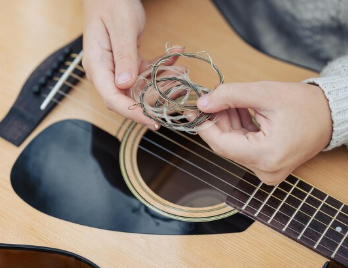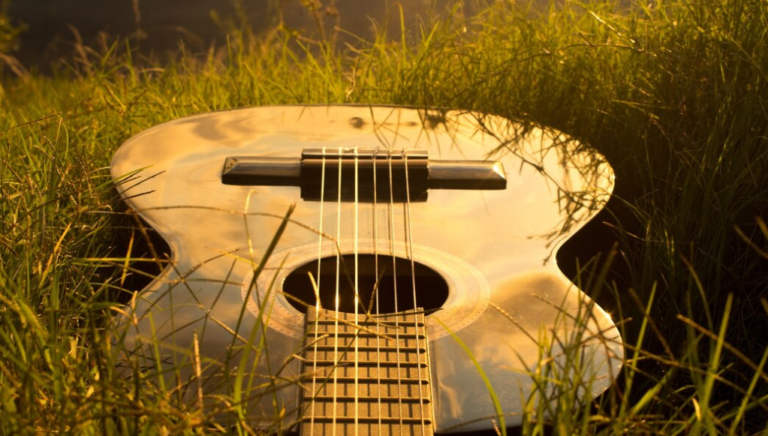The Journey And Mastery Of The A Chord You Need
Good day, you remarkable individual and/ or silly human. I’m sitting here, sipping my steaming mug of dark roast coffee, overlooking the serene majesty of the lake in the pastures of New Jersey. Yes, that’s right, good old NJ where smokestacks kill just about everyone and U-Turns are everywhere. The morning sun painting everything gold… It’s a new dawn, a new day, a new life and I am feeling GOOD. Why? The A Chord, friend. It’s the amber that makes the morning golden.
We’re on this journey together, after all, a journey dedicated to personal growth and relentless pursuit of our goals. Let’s dive in, shall we? Let’s grab hold of the promise of this day and make something extraordinary of it. Remember, every new day is a chance to change your life and the A chord will do just that. Let’s take a bite:
The History of the A Chord
Ancient Origins
The A chord, a staple of all music genres, has its roots in ancient times. Early forms of music yielded the inception of the A chord, as musicians experimented with different string vibrations to create a harmonious sound.
Renaissance and Baroque Influence
As music evolved during the Renaissance and Baroque periods, the A chord also underwent significant transformation. The harmonic developments of these eras shaped the structure and sound of the A chord, turning it into an integral part of the musical progression.
Classical Period
The Classical period saw the A chord playing a pivotal role in compositions. It reinforced the melody and served as a base for symphonies, concertos, and sonatas, enhancing the depth and dynamic range of music pieces.
20th Century Transformation
With the advent of modern music genres like jazz, blues, and rock, the A chord adapted and transformed, driving rhythm and melody uniquely in each genre. From the Delta Blues to 21st century Pop, the A chord has remained a staple in.
Understanding the A Chord
Musical Theory Behind A Chord
Understanding the A chord requires comprehending its construction. It is a triad, composed of the root note (A), the third note (C#), and the fifth note (E) of the A Major scale.
Mastering the A Chord: From Basics to Advanced Techniques
The A chord, a fundamental chord in the world of guitar playing, offers a gateway into the vast universe of music. This article explores the different variations of the A chord, its role in popular songs, and advanced techniques, providing a comprehensive guide for both beginners and seasoned players.
Different Variations
The A chord is not just a single shape or sound; it’s a palette of musical colors. The most common variations include the open chord and the barre chord, each offering a unique texture and tonal quality. The open A chord is bright and resonant, ideal for acoustic performances, while the barre chord variation offers a fuller, more robust sound, suitable for electric guitar playing. Beyond these, there are several other variations, each adding its own flavor to a musical piece.
Visual Diagrams
To effectively learn these variations, visual diagrams are invaluable. These diagrams show precisely where to place your fingers on the fretboard for each version of the A chord. These visual aids not only simplify the learning process but also help in understanding the relationship between different chord shapes and their sounds.
Playing the A Chord
Step-by-Step Guide
For beginners, mastering the A chord starts with the open A major chord. The step-by-step guide involves placing the fingers correctly on the second fret, strumming from the fifth string, and ensuring each note rings clearly. This foundational skill sets the stage for more complex variations and techniques.
Common Mistakes and How to Avoid Them
A common hurdle in playing the A chord is dealing with muted strings or buzzing sounds, often due to incorrect finger placement or insufficient pressure on the strings. To counter these issues, tips like adjusting finger positions, checking string clearance, and practicing finger strength exercises are essential.
Practice Exercises
Regular practice is key to mastering the A chord. Simple exercises, such as switching between the A chord and other chords, strumming patterns, and fingerpicking techniques, can significantly improve fluency and confidence in playing.
The A Chord in Songs
Iconic Songs Featuring the A Chord
The A chord’s versatility shines in its application across various genres. Iconic songs like “Sweet Home Alabama” and “Wonderwall” feature the A chord prominently, showcasing its adaptability and appeal in different musical contexts.
Analyzing Chord Progressions
Understanding how the A chord fits into chord progressions enhances musical comprehension and songwriting skills. Analyzing songs with the A chord reveals its role in creating harmonious transitions and emotional impacts within a piece.
Creative Applications
Experimentation is the key to personalizing one’s musical style. Playing around with the A chord, incorporating different strumming patterns, or adding rhythmic variations can lead to unique interpretations and compositions.
Advanced Techniques
A Chord Variants and Extensions
Exploring more complex forms of the A chord, such as seventh chords, suspended chords, or add9 chords, opens up new possibilities in terms of sound and emotional expression. These advanced variations add depth and sophistication to a guitarist’s repertoire.
Famous Guitarists and Their Use of the A Chord
Studying the styles of guitar legends like Eric Clapton or BB King, who frequently incorporated the A chord into their music, offers valuable insights. Their creative and effective use of this chord can inspire guitarists to develop their unique voices in the musical landscape.
Alright, skip. This magical triad, the A chord, is more than tones strummed together; it’s the lifeblood of the guitar & music. It’s time to take a deep dive into the myriad shapes and forms, the countless applications in iconic songs, and the intricate techniques of the A chord. It matters not if you are just striding your first steps in the guitar world or if you’ve been strumming for years; this exploration of the A chord will prove to be a treasure trove of insights. It’s a journey worth embarking on, one that will reward you with a richer understanding of music and an enlightened approach to your guitar playing. Here’s to your musical voyage – may it be as magical as the A chord itself!






